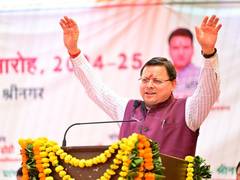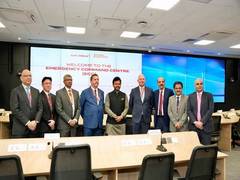Chandigarh: Skin bank inaugurated at PGI, first in north India
Chandigarh [India], December 9 (ANI): The first skin bank in the northern region was inaugurated in the Department of Plastic Surgery, PGIMER, Chandigarh, on Thursday by Dr Vivek Lal, director of the institute.
The director also inaugurated a CME on “Advances in Burn Care and Skin Banking” and the facility will be very useful for patients with major burn injuries.
Leading experts in the field of burn injuries shared their insights on the latest developments in burn management, ranging from innovative surgical techniques to advancements in post-burn rehabilitation.
As we all know, burns cause tremendous physical, psychological, and financial stress on patients and their families. PGIMER, Chandigarh, a tertiary care centre for burns, receives approximately 500 patients with burns annually.
Most of these patients have burns on more than 40 per cent of their body surface area, requiring extensive surgeries and often leaving them without enough skin graft donor areas. As a result, healing of burned areas is not possible or is delayed, leading to scarring, contractures and prolonged hospital stay.
Skin is the largest organ of the human body and has crucial protective functions, and skin lost due to burns must be replaced by skin from elsewhere. This process is called ‘skin grafting’, and uses skin harvested from either the patient’s own body or donated skin from deceased individuals.
This preserved skin is used as a temporary burn wound graft and provides many of the crucial functions of healthy skin like barrier against infection and fluid loss, decrease pain, and promote healing of underlying tissues. Allograft skin is obtained from cadaveric (deceased) donors after consent is obtained from the next-of-kin.
Tissue donors are carefully screened by reviewing past and present medical records, interviewing medical staff, interviewing the next-of-kin for past medical history and high-risk lifestyles. Samples of the donor’s blood are also tested for many transmissible diseases, including hepatitis and AIDS.
The skin of any deceased person over the age of 18 can be donated within six hours of death, irrespective of gender and blood group, with no upper age limit. The skin is then extracted, harvested and processed, which takes five to six weeks. After this, it can be provided to patients in need.
Unlike a kidney and liver, which cannot be stored and need to be transplanted within a few hours of donation, the skin can be preserved in 85% glycerol solution, and stored between 4 to 8 degree Celsius for a period of up to 5 years. The skin donation process is swift, taking only 30 to 45 minutes.
There is no bleeding from the site where skin is harvested, and there is no disfigurement to the body. After the procedure, the donor sites on the body are bandaged appropriately. The donated skin is evaluated, processed, screened at the skin bank, and then used for burn patients, giving them hope and better chances for survival.
India currently faces a shortage of skin banks, particularly in the North, making the establishment of this facility a crucial milestone. Professor Atul Parashar said that the Skin Bank at PGI aims to play a pivotal role in addressing this gap, offering a lifeline to those grappling with the aftermath of burn injuries.
It was highlighted during the CME that there is a need to create awareness about skin donation to help those in need, and it can potentially save many lives.






